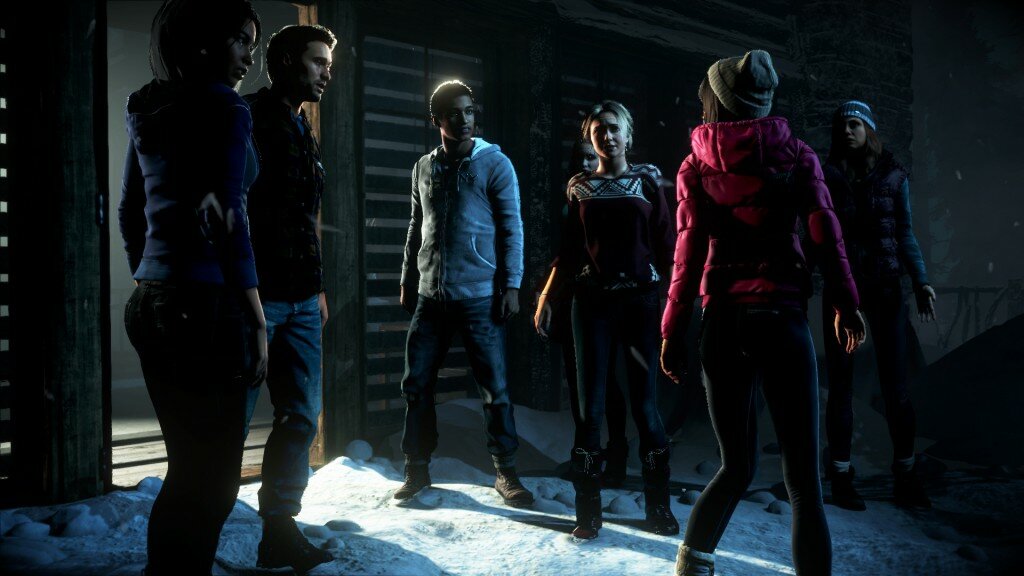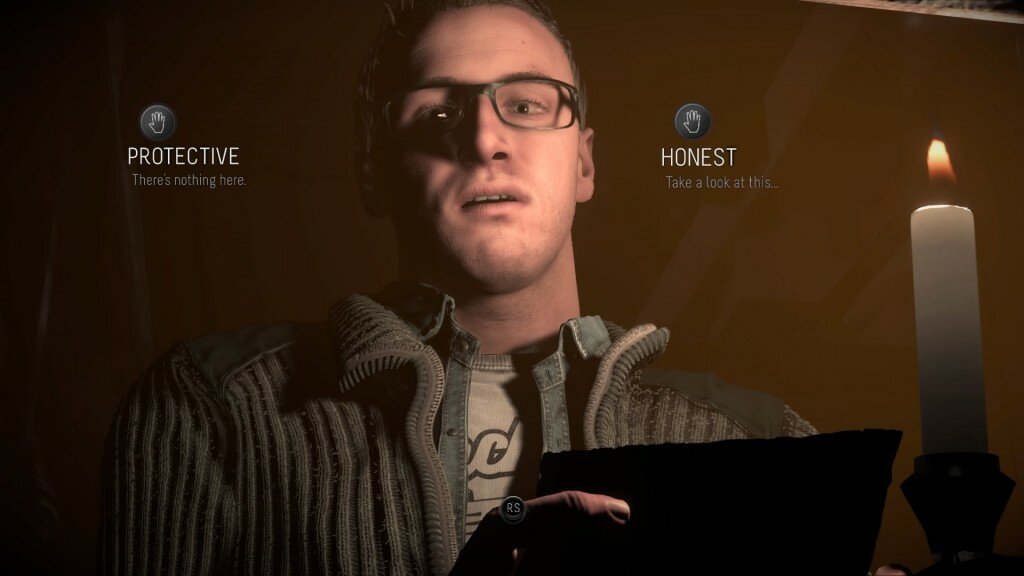I’m not a great fan of horror video games. They give me the frights something shocking but for some inexplicable reason, they intrigue me.
I’m not sure why that is.
Maybe, deep down, I like the idea of playing scary games because I’ll be out of my usual video game comfort zone when playing a scary game. Also, I’m an adult and scary video games shouldn’t scare me, right?
It also takes me some time to pluck up the courage to play a horror game. Take Until Dawn, a horror game for Sony’s PlayStation 4. I had the game disk sitting in my entertainment cabinet for weeks and weeks before I had the courage to pop it into my PS4 and start playing. For some reason, I just couldn’t bring myself to play it.
Whenever I play a horror video game (which, to be honest, isn’t often) I reassure myself “It’s alright. These are just pixels on the screen. Those guts hanging out of that bloke who’s nailed to the wall aren’t real guts” but it makes no difference, I still feel a little nervous. I play horror video games during the day and with the curtains open, and I’m definitely not wearing headphones. That would freak me out completely.
So, it’s something of a surprise that I’m playing Until Dawn but I’m looking at it like this: It’s a horror video game for gamers who don’t really like playing horror video games, and much of that is down to the concept that while the player does guide the characters around the game world using the controller, much of the time the player is acting like the director in a movie, deciding the fates of eight (sex-crazed) teens trapped on a mountain, at night, during a blizzard, a year after two of their friends disappeared without trace. Oh, there’s some unknown horror stalking them, too, which provides the scary part.
Yes, Until Dawn is dripping thick with B-grade horror tropes (strange things that go bump in the night, shadowy figures in a window for a brief second) but I don’t care: I’m hooked. I’ve become a horror game convert thanks to it but I’d say my play through has been a little unorthodox.
Before I actually started playing it I actually watched an entire play through on YouTube. Seriously, I did: I watched someone else finish the game on You Tube.
I know why I did it: I did it because I wanted to know how bloody scary it was. I wanted to know how many jump scares there were and work out how many pairs of spare underpants I’d need on standby [the answer is none. So far].
I’m also tackling Until Dawn like it’s a pick-your-own adventure book. You know, the kind some of us older folk read as teenagers where the outcome of a situation was determined by what page your turned to (ie If you take the left page, turn to page 101, if you take the right path, turn to page 105). It seems to work well for Until Dawn.
Central to the game’s core is something called The Butterfly Effect and the impact that decision making has on future events. At various points, the player must decide what to do: Do you make a character tell the truth, potentially upsetting another character or do make them lie to keep the peace? Do I direct a character to make a run for it or hide from a chasing foe? At times you’re under pressure, too, with the decision making needing to be made within a specified time period.
Talking of decision making, I thought making them would be easy but actually I’m finding it harder than I thought, mainly because I’m not sure whether to make decisions as if I was my real, human self or if I was my video gamer alter ego. Sometimes, though, I’d make a decision purely on whether I liked a character or not. For characters I didn’t like it was easy making decisions that would impact on them later on (of course, doing that could mean that it might affect character’s I liked) .
The Butterfly Effect is an interesting game play mechanic that makes you think very carefully about what actions you take. An innocuous decision at the beginning of the game could have major ramifications down the track. That’s a lot of pressure and at times, I’d have to think long and hard about what to do, fearful of what the outcome would be.
Thinking about it, Until Dawn would be the perfect Halloween night game where you played with a few friends and passed around the controller, each person making a decision when the game required it. It would be a fascinating study in human behaviour.
For my play through, it also wasn’t unusual for me to ask someone sitting in the room with me what I should do, hoping for some guidance. Often they were no help at all but the Butterfly Effect put a bit more gravitas into things, a bit more weight on decision-making.
Yeah, Until Dawn does have jump scares and it gets a lot darker from about the half-way point, but many of the scares are telegraphed enough so you can anticipate when you need to clench your buttocks in anticipation – or get a clean pair of underwear ready. While it’s still a horror video game, Until Dawn has show me that there are indeed horror video games out there for gamers who get scared stupid by traditional horror video like Resident Evil, Outlast or even Alien Isolation. I didn’t even finish Alien Isolation. I got too scared.
I’m a little excited that Supermassive haven’t ruled out some future DLC (Downloadable Content) for the game, although how that would work, I’m not sure, but it’s exciting, nonetheless.
Until Dawn will still deliver some scares but the fact that you play the director more than the character is a refreshing twist to the traditional horror video game.
Just be prepared to make some tough choices – and maybe keep some clean underpants handy.








![Fallout-4-Vault-111-640x360[1]](/wp-content/uploads/2015/06/Fallout-4-Vault-111-640x3601-296x197.jpg)
